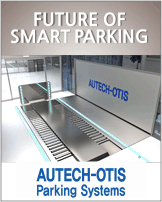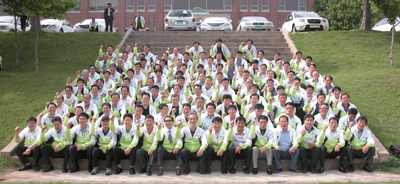|
|
|
Parks, hospitals, and public lighting to be replaced with 7,000 LEDs Revitalizing the market by purchasing high-quality LED products for public institutions and leading the way in their distribution 2011/08  The Seoul Metropolitan Government announced the '2011 Pilot Supply Project Plan' and '2011 Standards for the Supply of LED Lighting to Public Institutions' last month, which mainly includes the installation of 7,000 LED lights in 14 locations in the city. This is in line with the Seoul Metropolitan Government's LED Replacement Basic Plan, which aims to replace 100 percent of the public sector with LEDs by 2020 and 80 percent of the private sector with LEDs by 2030. LED (light-emitting diode) lights consume 90% less power than incandescent bulbs and have a long lifespan of around 50,000 hours. They are the eco-friendly lighting of the future, free of pollutants such as mercury and lead, and have recently gained prominence in the green energy wave. The Seoul Metropolitan Government established LED supply standards in September last year to improve the technical capabilities of suppliers and the reliability of consumers. The standards were established through an advisory meeting of an advisory group composed of 12 top experts from the KS certification agency, the Ministry of Knowledge Economy's Institute of Technology and Standards, a high-efficiency equipment certification agency, Energy Management Space, national research and testing institutes, academia, and associations (companies), the first local government in the country. This year, the Seoul Metropolitan Government plans to collect opinions from industry, academia, and research experts to prepare the '2011 LED Supply Standards for Public Institutions in Seoul', which has been upgraded from the previous year, and to induce the purchase of high-quality products when selecting LED lighting. In particular, to improve the quality of LEDs, the light efficiency has been increased by 5 to 10 lm/W compared to the previous year. Luminous efficiency (unit lm (lumens)/W) is a physical quantity that indicates the brightness of light relative to the energy (power) consumed, and is calculated by dividing the luminous flux of a lamp by the power consumed (W, watts). In addition, the light change rate for temperature changes has been strengthened from ±25% to within ±10%, and a color space distribution that can prevent color staining of LED lights will be introduced and applied from next year to improve the lighting environment of consumers. In addition, for the safety of pedestrians, the weight of LED security light fixtures has been reduced from 15 kilograms or less in 2010 to 10 kilograms or less for products of 150W or less and 15 kilograms or less for products of 150W or more, and regulations and safety have been strengthened. Seoul plans to revitalize the supply of LEDs in the private sector by leading the way in public sector LED lighting to increase demand and lower prices. Since 2007, the city has replaced all 152,462 existing bulb-type traffic lights with LEDs as part of the traffic light improvement project under the LED Traffic Light Supply Plan. Last year, the city piloted a project to supply indoor lighting and security lights with LEDs, and as of the end of the year, 7,732 LEDs, or 7.3% of the total 228,685 indoor lights in public buildings, were replaced with LEDs. Invested KRW 2.8 billion this year to install LED lights in public institutions This year, starting last month, the government will invest a total of KRW 2.8 billion to install about 7,000 LED lights in 14 public institutions, including parks, hospitals, and government buildings. In particular, taking advantage of the advantages of LED lighting, the government plans to create a light pollution minimization complex at Uicheon Stream in Dunchi, Han River, and install LED lighting dimming devices in the underground parking lot of Seosomun City Hall to maximize energy savings. Light pollution refers to the phenomenon of unnecessary or excessive artificial light, such as light scattered into the air, light intruding through residential windows, and light causing glare, causing damage to the human body or natural environment. "Excessive landscape lighting makes people tired and adversely affects plant growth, so we plan to enact ordinances and enforcement rules for light pollution and set installation standards," said Lee Myung-ki, head of the Urban Light Policy Team at the Seoul Public Design Institute. "To this end, we will replace existing sodium lights with LED lights to save energy, increase efficiency, and minimize light pollution." The use of LED lighting is expected to save more than 50% of electricity and reduce greenhouse gases compared to conventional lighting, which is similar to the effect of planting 106,000 pine trees. Meanwhile, Seoul operates the 'LED Voluntary Management System' for the follow-up management of LED lighting. The LED Voluntary Management System is a system in which the LED lighting purchasing department, which is the actual user, proposes purchasing standards that take into account the actual lighting environment, and the supplier voluntarily submits a product performance report that meets the proposed standards and takes responsibility for the performance of the products delivered within the warranty period. "The lighting sector is the key to greening buildings, which accounts for 21 percent of the city's total electricity consumption, and we plan to replace 100 percent of public lighting by 2020 through the distribution of high-efficiency and eco-friendly LED lighting to dramatically reduce energy and greenhouse gases," said Yeon-chan Jung, head of the Seoul Clean Environment Division. |

|
 Home Intro
Home Intro













